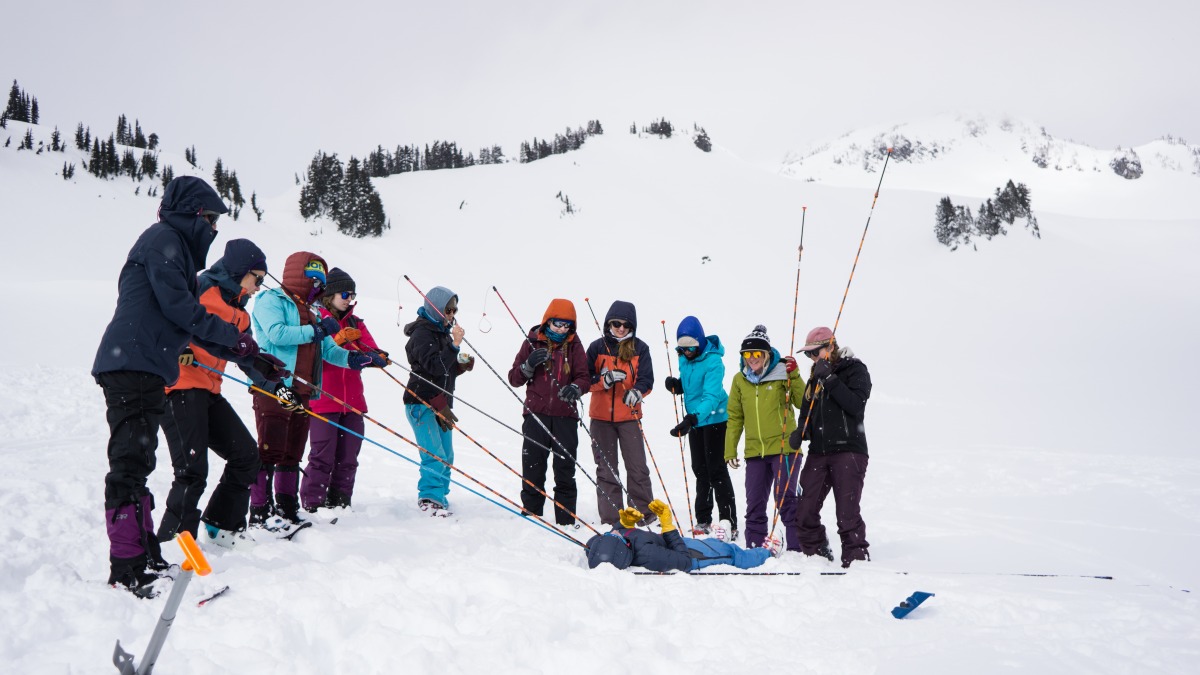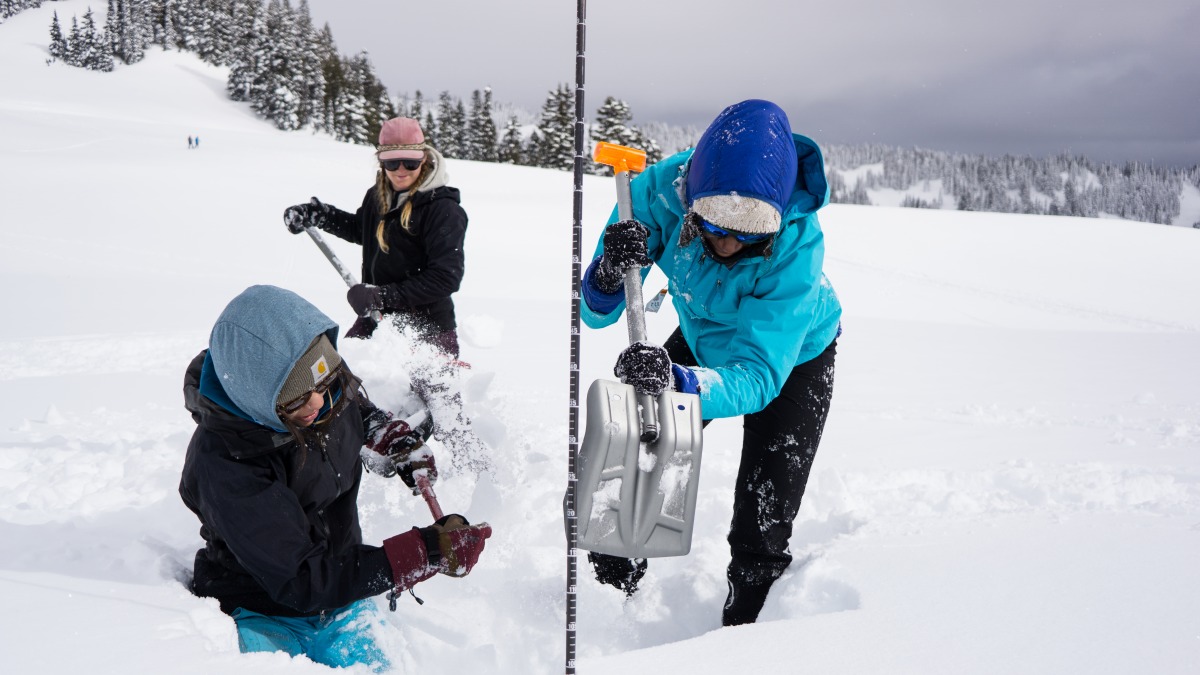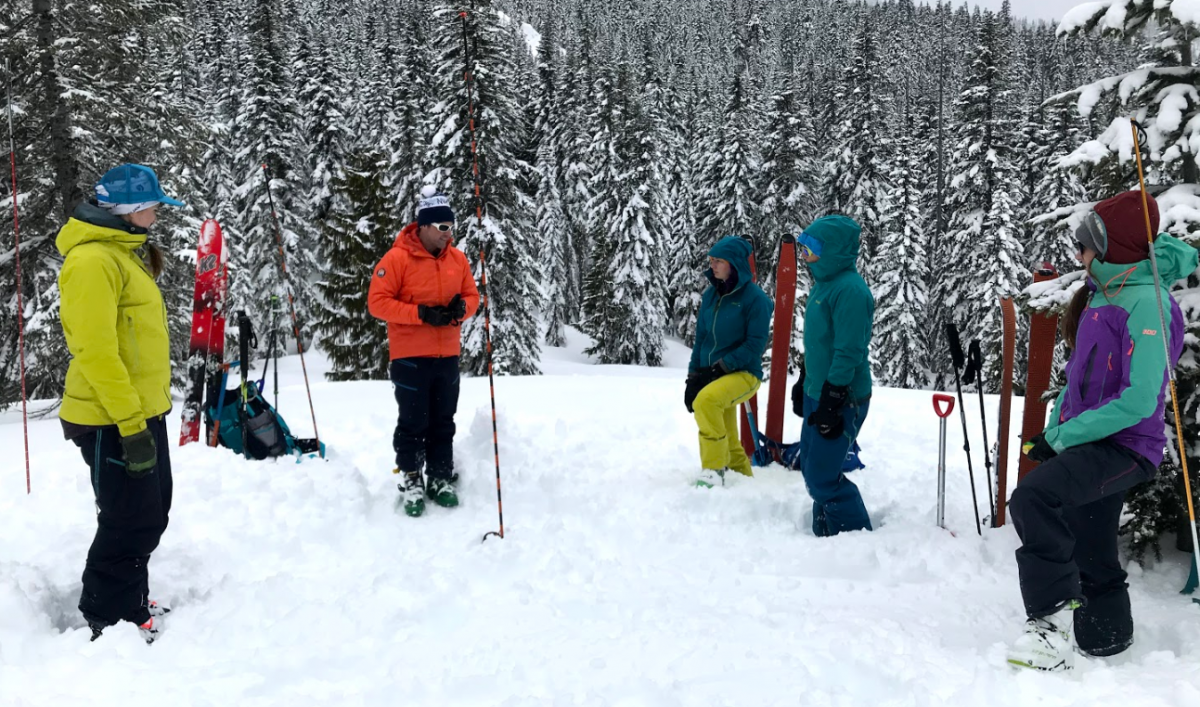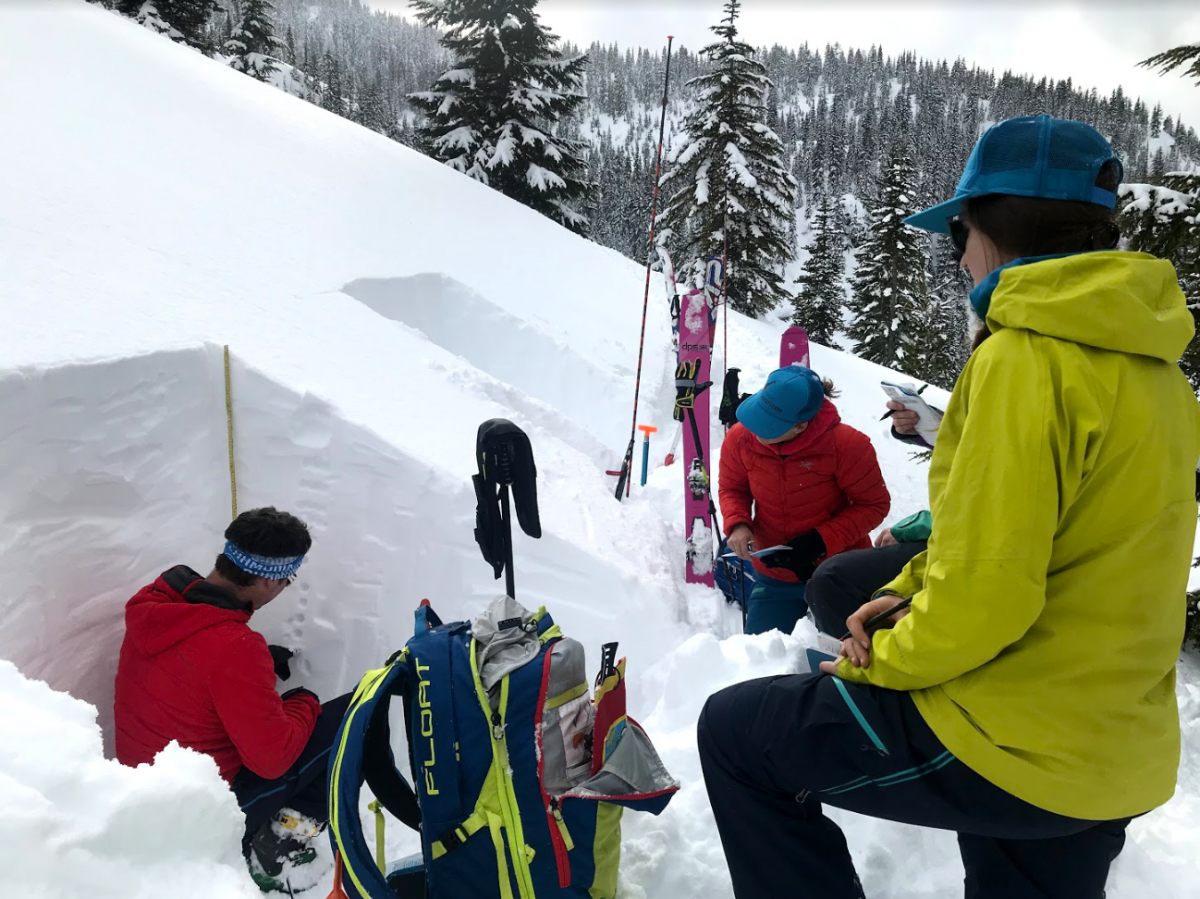Pro vs. Rec, and how to choose the avy course for you
Recently the Colorado Sun published a report offering a limited but surprising view into avalanche statistics. In the article, an avalanche instructor who surveyed backcountry travelers leaving the Vail ski resort found that 52 of the 92 survey participants reported having triggered a slide at some point in their backcountry ski experiences. Of that group, more than a third had no official avalanche education.
As backcountry skiing becomes more popular, growth in avalanche education courses is following suit. Today there are hundreds of classes available each year; the curriculum and overview is available via a simple internet search. Excuses for not having some kind of avalanche education are dwindling. However, over the past four years of helping organize various avalanche courses through my volunteer work, I have found that most people struggle to navigate the landscape of the avalanche education world.
Even though we hope that most frequent WildSnow readers don’t face these kind of problems, we are fairly certain that you may have friends that do. This post provides a high level overview of avy education options as well as advice on how you can get the most out of taking a course.
So far I’ve personally had the opportunity to take my Level 1, Companion Rescue and Level 2 Rec courses, all through AIARE. The information below represents what I have personally gathered from conversations with guide operations, instructors and friends. It is not intended to be a wholly comprehensive source. If you have something to add please do so in the comments.
Understanding acronyms and Pro vs. Rec
What is the difference between AAA (American Avalanche Association or A3) vs AIARE (The American Institute for Avalanche Research and Education)? One of A3’s roles is to set the guidelines and evaluation criteria for educational programs for the course structure that AIARE then uses to develop a curriculum to teach the courses. AIARE is an approved professional and recreational provider that follows A3 standards though they are not the only one. There is also American Avalanche Institute (AAI), Silverton Avalanche School, and several others. Although curriculum is similar among different course providers, this post will focus on the AIARE curriculum avalanche courses specifically as it is the most popular program that is widely available across the United States as well as internationally.
Starting in the 2017-18 winter season, there are now two types of “tracks” a student can take within the AIARE (this is similar to AAA courses as well): professional (Pro) or recreational (Rec). Each course earns a different kind of “certification”. Students in Rec courses will receive a certificate of course completion, while students taking Pro level courses will have to pass a series of skills assessments to become certified at the specific level.
The Pro track is geared towards individuals who are pursuing professional career opportunities. An important point to highlight is that the Pro track is not reserved for individuals who want to become avalanche instructors; it is a prerequisite for other professional opportunities, such as forecasting, AMGA guiding, and certain ski patrol positions. Each course has a testing component that students need to pass to complete the course and get the certification.
The Rec track is meant for anyone who’d like to learn more about how to safely travel in the backcountry, evaluate terrain and understand how weather affects the changes in the snowpack. The Rec track has no test in order to get the “certification of course completion”; students simply need to attend all required sessions of the course. It is not a certification per say, but a stamp that you invested the time to further your avalanche education specific to AAA standards and have more knowledge than the average human; this will be your ticket to enter the Pro track or a requirement to volunteer with organizations like your local Search and Rescue.
Rec, Pro and other course options
The courses that are probably most familiar to everyone are the Level 1 and Level 2. The Level 1 and 2 now both come in Pro or Rec tracks. Another course that is part of the program is the Companion Rescue Course. This course has no prerequisites, and if desired can be taken before a Level 1. The Companion Rescue Course and Level 1 are required to get into a Level 2 course. The Companion Rescue course does not provide any certification.
As far as course structure goes, currently there are four main Rec courses:
Avalanche Awareness
Level 1
Companion Rescue
Level 2
Most Avalanche centers in the US host free Avalanche Awareness courses, which are 1.5 hour lectures providing an overview of basic knowledge to be aware of when considering traveling in uncontrolled backcountry terrain.
A Level 1 Rec course has two common formats. One consists of two evening lecture classes that last about three hours in conjunction with two eight-hour field days outside. The other option is a full three-day course, with a mix of lecture and field time. The material focuses around terrain selection and hazard recognition, including an overview of basic weather/snow patterns and rescue scenarios. The Level 1 course focuses on students being contributing members to a group in avalanche terrain.

Student learning how to use their probe in an AIARE Level 1 course at Mountain Rainier. Photo: Krystin Norman
Level 2 Rec is a three-day course, with a mix of lecture and field time each day. It dives deeply into the snow science, weather and understanding avalanche forecasting.
The Companion Rescue is a single eight-hour field day course that focuses entirely on rescue scenarios; different beacon search techniques, shoveling, probing and lots of time to practice.
For the Pro program offered through AIARE, the courses are as follows:
Level 1 Pro (Level 1 Rec and Avalanche Rescue are pre-reqs)
Level 2 Pro
Instructor Course (only required if one is looking to become an avalanche instructor)
To take a Pro Level 1, students must have completed their Rec Level 1 and a Companion Rescue Course, as well as demonstrate proof of at least 20 days of backcountry skiing experience, where you have created trip plans and evaluated avalanche conditions.
In order to become certified to teach Level 1 courses (for AIARE specifically), in addition to the Pro Level 1, one also must also take the Instructor Course, where students get to learn different teaching techniques.
After the Pro Level 1, you can take the Pro Level 2 to further enhance your technical knowledge and to teach Level 2 Rec courses. To maintain instructor status, certain refresher courses need to be taken every few years. To become a lead instructor, there are even more prereqs. (Yes, if you are adding $$ up, taking the Instructor track is quite pricey).
It is also important to note that most guiding companies offer refresher courses. If you have taken your avalanche training a long time ago, refresher courses are useful to go over familiar skills with a group and instructor. It’s all about keeping you safe and remembering to never stop practicing the basics!
Choose the right course and get the most out of it
Now that the whole structure has been laid out below are a few suggestions on how to make the most of your avalanche course.
If you are just getting into snow sports
The backcountry is not an ideal place to learn to ski or snowboard. Conditions can be variable, terrain is often more complex than at resorts and you spend a lot more time going uphill than down. Not knowing how to navigate a complex ski situation can pose a risk for you and others around you. Invest in a season pass and spend at least one season practicing your downhill skills before venturing out. At this stage, attending an Avalanche Awareness course is a good way to learn about about the basics of traveling in the backcountry.
If you are a resort skier/snowboarder and venturing into backcountry travel
A Level 1 Rec course is a fantastic start for you — find a guiding company that offers the course and sign up. Learn how to use your backcountry gear before you show up for the course. You can do so by checking your local resorts’ uphill policy and testing out the bindings/skins beforehand in a safe environment. It’s also helpful to get familiar with your beacon and what all the buttons do; check out my beacon post from earlier this season, and instructional videos on beacon use.
If you are not sure that you want to spend money on a full backcountry set up yet, it is okay to rent or borrow the ski/splitboard set up for the class. It is strongly encouraged to purchase your own beacon, shovel and probe, since those items are crucial rescue gear and is important to know how to use the specific gear you own.
If you are a seasoned backcountry traveler with not formal avy training
A Level 1 Rec course is extremely useful refresher of knowledge you already have; it is worth the money and will challenge you in useful ways specifically helping prevent human factor from taking over. Don’t wait and just do it! I promise, you’ll learn something new; plus it’s an invaluable chance to focus on practicing avalanche skills for a few days.
If you have taken your Level 1 but not sure if you’d like to take your Level 2
A Level 2 Rec is a terrific course to step up your avalanche safety education. A Level 1 course means you likely will rely solely on the avalanche forecast, which can be problematic for a variety of reasons. A Level 2 dives a lot deeper into understanding how to read the current state of the snowpack, gather observations and apply it to better understand the avalanche forecast. In the course, you will actually work to make your own avalanche forecast for the area you are in. This is an essential skill if you’re planning to venture into areas without a reliable avalanche forecast, or into areas that aren’t the focus of your local avalanche forecast (e.g. at high elevations or deep in the wilderness). If you are consistent backcountry traveler, you should absolutely consider investing into furthering your education beyond a Level 1.
If you have Rec Certifications and want to give back to the community
Consider becoming an Avalanche Awareness instructor and continue to work on your Professional certifications to become a professional avalanche educator. With the growing interest in backcountry travel and corresponding need for education, instructors are commonly overloaded with courses. There are also very few lead Instructors that are female in the US. I personally recommend taking the Level 2 Rec prior to taking Level 1 Pro, as it allows more time to practice your skills to feel more confident and have more experience for teaching those concepts to others.
If you are looking to become a guide
I am not qualified to give advice in this category, but if you’re on that track, you probably don’t need it anyways 🙂
Miscellaneous tips
Practice, practice, practice. Religiously check avalanche forecast. Keep in mind that the Companion Rescue course is an excellent way to refresh your skills yearly or every other year.
Education is pricey, but the price of your life or your friends life can’t be measured. We hope you consider furthering your avalanche education or continuing to stay current with your certifications.
WildSnow Girl, Julia Dubinina, is a weekend warrior chasing snow in winter and sun in summer. A lover of long tours and steep skin tracks, she explores the Pacific Northwest and beyond. When she is not out adventuring, she is working away at her corporate desk job for a software company to make her next adventure happen.



